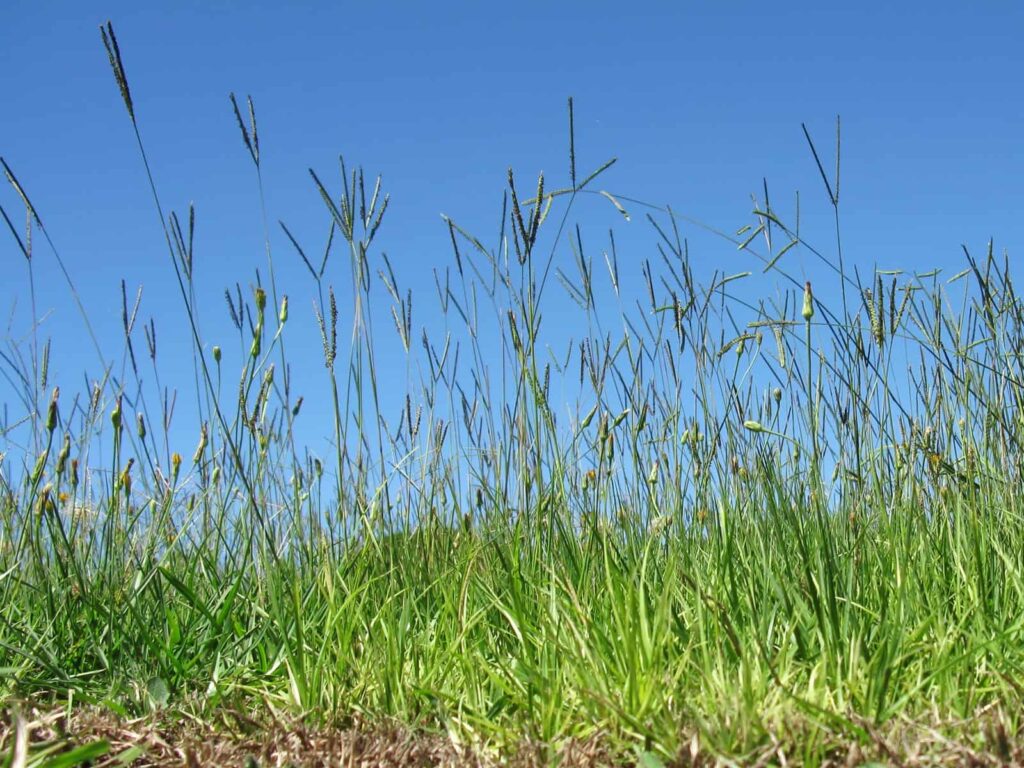Dr. Elizabeth (Betsey) Boughton is the Director of Agroecology and a Senior Research Biologist at Archbold Biological Station’s Buck Island Ranch, a commercial cattle ranch in Lake Placid, Florida. Recently, Dr. Boughton presented the second webinar in an 11-part series called Grazing Land Management and Soil Carbon. The topic of her half-hour talk, “Grazing has a neutral or positive effect on soil carbon in Florida pastures,” summarized the results of years of field research at Archbold Buck Island Ranch.
Carbon Inputs, Outputs, and Sequestration
Dr. Boughton began her presentation by reviewing how plants such as grasses take carbon dioxide (CO2) from the air, move it to their roots, and sequester carbon in the soil. That’s important for climate change mitigation, she explained, and grasslands provide a significant sequestration opportunity since they cover 26% of the world’s land surface. Yet plants also release some of the CO2 that they capture through photosynthesis.
To achieve sequestration then, carbon inputs must exceed carbon outputs – and all plants don’t sequester carbon equally.
Two Type of Florida Pastures
Most people think of Florida in terms of beaches, but the Sunshine State is 20% ranchland and home to 900,000 beef cows. Archbold Buck Island Ranch, where Dr. Boughton works, is a 10,500-acre property with 3000 cattle. It’s a research center for studying the impact of ranching on water, biodiversity, and carbon, but also one of the top 20 ranches in the state. Like other ranches in Florida, it has two types of pastures: cultivated Bahia grass and semi-native grass.
- Bahia grass is originally from South America. It withstands both wet and dry conditions and is also heat-tolerant.
- Semi-native grasses are used for standing hay crops, mainly in Florida’s dry winter season.
The research that Dr. Boughton shared covered both types of grasses.
Grazing Exclusion
Grazing exclusion is designed to prevent cattle from grazing in a certain area, typically with fencing. The area inside these fenced-off plots is called an exclosure. As Dr. Boughton explained, Archbold Buck Island Ranch established 5 10m x 10m exclosures in 2002 and another 19 in 2005. She then shared some photos from 2014. The exclosures now contained a significant number of woody plants, but the grazed plots that started with grasses remained covered in them.
Bahia Grasses
Inside the Bahia grass exclosures, the aboveground biomass was twice as large as the grazed areas; however, the root biomass was 74% lower. By contrast, the Bahia grass grazed plots had a microbial biomass that was 79% greater and a soil carbon concentration that was 24% higher. In other words, the grazed plots sequestered more carbon and had more microbes in the soil. This has implications for climate change mitigation, but soil microbes are also essential for soil health.
Semi-Native Grasses
Archbold Buck Island Ranch also established exclosures and grazed plots for semi-native grasses, and Dr. Boughton shared some additional pictures for comparison. Inside the exclosures, there were more woody species and fewer grasses over time. There were similar levels of carbon in the top layer of soil of grazed plots and exclosures, but soils in grazed areas had higher bulk density, resulting in greater total soil carbon in grazed areas. By contrast, grazing the semi-native grasses had what she calls “a neutral effect on soil carbon concentration”.
Conclusions
As the title of Dr. Boughton’s presentation explains, grazing has a neutral or positive effect on soil carbon in Florida pastures. In part, this is a function of the type of grass that’s grazed. Ultimately, grazing maintains grasses and prevents woody species from proliferating. On Florida ranches, typical grazing management maintains soil carbon. If grazing is removed from Bahia grass pastures, soil carbon will be lost.
More research is needed with Bahia grass pastures, but Dr. Boughton theorized that Bahia grass sequesters more carbon because it has a larger root system than semi-native grasses. In addition, Bahia grass produces more root exudates, organic carbon compounds that are released from living plant roots into the soil.
Go Natural Education will summarize the next webinar in this series in a future article. Click here to sign-up and watch.
Additional Reading
- Does Grazing Affect Soil Carbon in Subtropical Humid Seminatural Grasslands?
- Opportunities to increase soil carbon sequestration in grazing lands in the southeastern United States
- Grazing enhances belowground carbon allocation, microbial biomass, and soil carbon in a subtropical grassland
- Accessing the success of hydrological restoration in two conservation easements within Central Florida ranchland
- How to Talk About Grasslands

